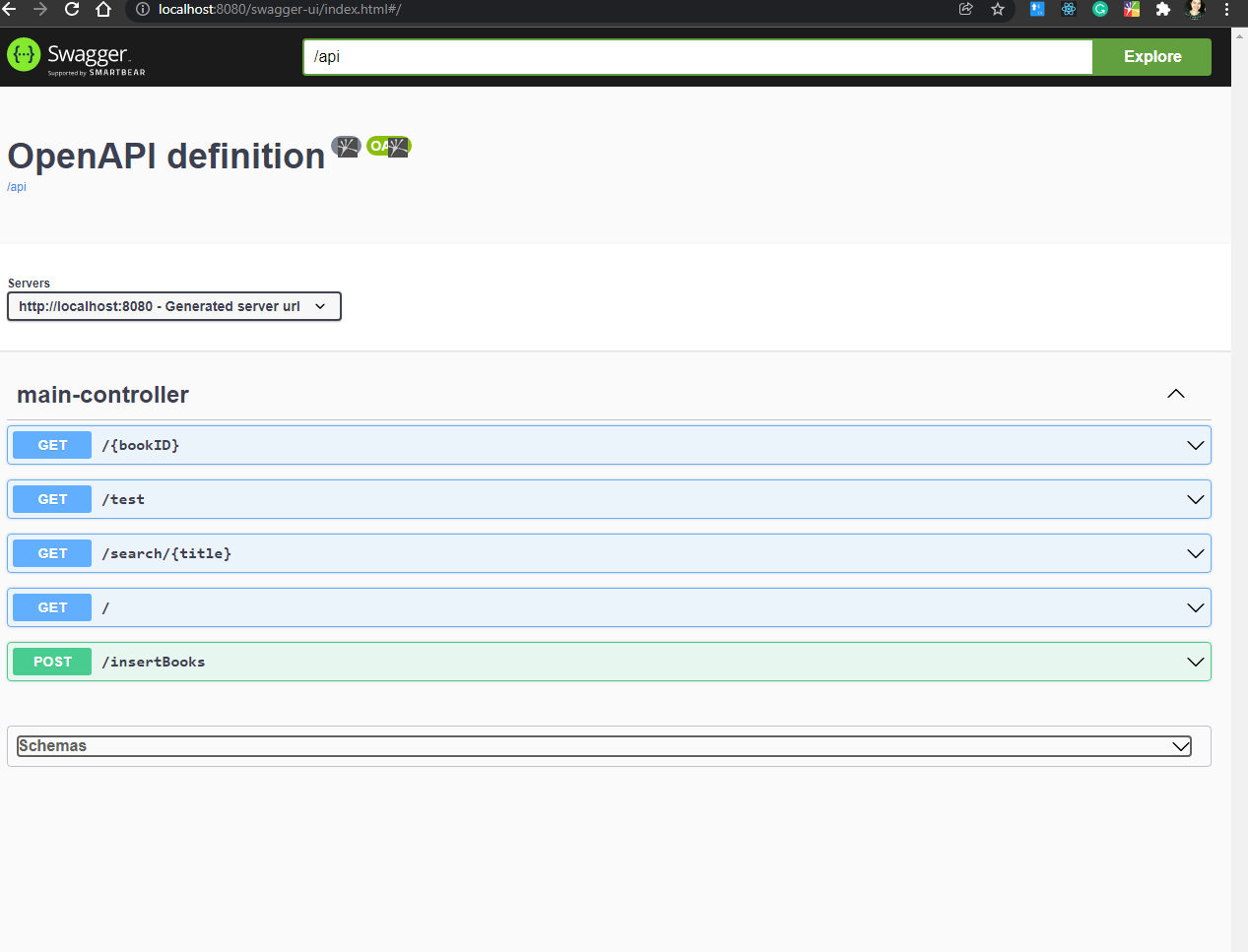These days I am more into creating backend projects which include microservices.But if anyone wants to test these services one needs postman or do the old classic way of curl command.
Both do the job brilliantly but what if I wanted some user who doesn’t want to install postman or use curl and still wants to test my live APIs thru the browser? I came across this swagger open API specification and this is a really handy tool!
In layman’s terms, Swagger OpenAPI specification provides API documentation for REST APIs. An OpenAPI file allows you to describe all the APIs within the project and even lets you try out the APIs!
Available endpoints can be /projectApi and all operations on each endpoint which can GET /getProjectApi , POST /insertProjectApi , DELETE /deleteProjectApi .

In this post, I will describe how I integrated swagger open API in Spring boot project.First you need a spring boot project having basic dependcies using Spring Initializr https://start.spring.io/ or you could use this project used in the example here
First add the springdoc-openapi-ui dependency to pom.xml:
<dependency>
<groupId>org.springdoc</groupId>
<artifactId>springdoc-openapi-ui</artifactId>
<version>1.6.4</version>
</dependency>
<dependency>
Then run the application and check the below url to check open api specification
http://localhost:8080/v3/api-docs/
You should be able to see something like this

springdoc.api-docs.path=/api
springdoc.swagger-ui.path=/swagger
springdoc.swagger-ui.operationsSorter=method

package com.TestDocker.BooksDocker.Controllers;
import java.util.List;
import org.springframework.beans.factory.annotation.Autowired;
import org.springframework.http.HttpStatus;
import org.springframework.web.bind.annotation.GetMapping;
import org.springframework.web.bind.annotation.PathVariable;
import org.springframework.web.bind.annotation.PostMapping;
import org.springframework.web.bind.annotation.RequestBody;
import org.springframework.web.bind.annotation.RestController;
import org.springframework.web.server.ResponseStatusException;
import com.TestDocker.BooksDocker.Models.Book;
import com.TestDocker.BooksDocker.Repository.BookRepository;
@RestController
public class MainController {
@Autowired
public BookRepository bookRepository;
@GetMapping("/test")
public String test() {
return new String("Working from DOcker Bopoks proj ");
}
@GetMapping("/")
public List<Book> fetchAllBooks() {
List<Book> books;
try {
books = bookRepository.findAll();
} catch (Exception ex) {
throw new ResponseStatusException(HttpStatus.INTERNAL_SERVER_ERROR, "Error occured in fetchAllBooks", ex);
}
return books;
}
@GetMapping("/{bookID}")
public Book fetchBookfromID(@PathVariable("bookID") Long bookID) {
Book book;
try {
book = bookRepository.getById(bookID);
} catch (Exception ex) {
throw new ResponseStatusException(HttpStatus.INTERNAL_SERVER_ERROR, "Error Occured in fetchBookfromID", ex);
}
return book;
}
@GetMapping("/search/{title}")
public List<Book> searchBookByTitle(@PathVariable("title") String title) {
List<Book> books;
try {
//System.out.println(title);
books = bookRepository.fuzzySearchByTitle(title);
System.out.println(books);
} catch (Exception ex) {
throw new ResponseStatusException(HttpStatus.INTERNAL_SERVER_ERROR, "Error Occured in searchBookByTitle", ex);
}
return books;
}
@PostMapping("/insertBooks")
public String insertBooks(@RequestBody List<Book> books) {
for (Book b : books) {
System.out.println(b.toString());
Book b1 = bookRepository.save(b);
if (b1 == null)
return "Book object is null";
}
return null;
}
}
So the swagger ui look something like this. Also json docs will be available at http://localhost:8080/api springdoc.swagger-ui.operationsSorter=method sorts the API paths in order of their HTTP methods. You can try and test the apis from web ui too.It also shows schema information! Overall this is a much convenient way of setting up documentation for your apis which can be handy in some situations.
That’s all folks!